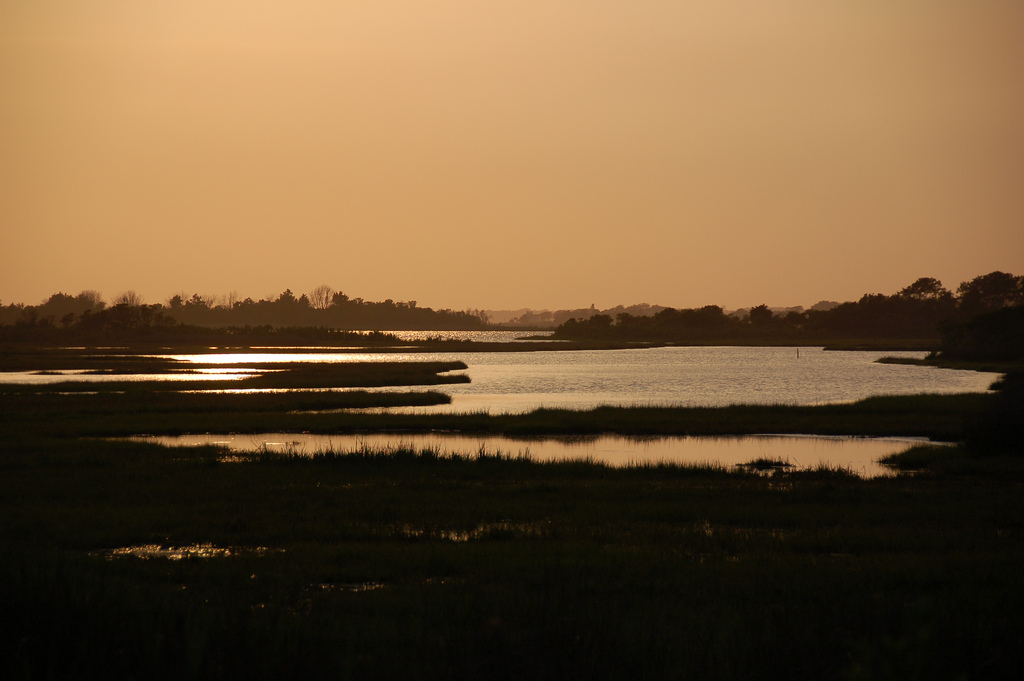
Consistent with my policy of running posts that take me, virtually anyway, out of the pandemic present to somewhere or sometime that’s interesting and wide-angle, I offer you the Chesapeake Bay: born in violence, growing up geologically and then sociologically, and now hitting the present with utter tomfoolery. And revelation. This first ran March 31, 2011.
The Chesapeake Bay was born as the Susquehanna River. Around 35 million years ago, an asteroid apparently smacked into what is now eastern Virginia and left a 50-mile-wide crater, a sink into which all the rivers – mainly the Susquehanna but also the Potomac and lesser rivers — coming east out of the Appalachians naturally flowed. Millennia came and went, ice ages came and went, and about 8,000 years ago melting glaciers raised the level of the Atlantic enough that, over the next couple of thousand years, it flooded into that old crater and on up the river valleys and created the Chesapeake Bay. I’m telling you this story mostly because I like it but please, bear with me, I do have a point.
Between the Chesapeake Bay and the Atlantic is the Delmarva peninsula; and between Delmarva and the Atlantic, along the “mar” or Maryland part, are barrier islands, Fenwick and Assateague. Barrier islands stretch along most of the American eastern seaboard, they’re long and narrow, and they’re not really islands in the sense of something solid that sits there while the ocean washes around it. They’re glorified sandbars and they move.
Nobody knows exactly how barrier islands got there but maybe when the Atlantic rose, it flooded Delmarva’s beaches except for the highest dunes, which then become islands. So on the land-side of the islands is old ocean that sometimes becomes brackish lagoons and sometimes gradually fills in to become marsh. And on the ocean-side of the islands, the incoming waves keep piling up sand and making new beach. The barrier islands are famous.
Fenwick Island — regardless of what the Bible has to say about building houses on sand — has been built on to a fare-thee-well: boardwalks, high-rise condos, marinas, roads, towns.Storms wash over the beaches and carry the sand away. Fenwick Island trucks in sand from elsewhere. A longshore current of sorts, called a littoral drift, carries the sand downcurrent along the island and closes up the inlets that Fenwick’s marinas and boats use. So Fenwick Island builds jetties on the up-current side of the littoral drift to catch the sand and sure enough, the inlets stay open. But now the down-current side doesn’t get its usual sand flow, and each storm erodes more beach. So the down-current people complain until the up-current people build big pumps and blow their excess sand over the inlet to the down-current beaches, from which — to everyone’s surprise — it again erodes. If someone’s watching from Mars, Fenwick Island must look like the Three Stooges.
On Assateague Island, an assortment of government entities bought the beach and the lagoon and marsh behind it, and set up a national wildlife refuge. Visitors are allowed: the summer beaches are covered every inch with people throwing Cheetos to seagulls and the marshes have a few paved walks around ponds and lagoons. But the island itself is left alone. Storms roll over the beaches, carrying sand into the lagoons and marshes; the marshes slowly turn into mainland. Quiet waves return sand to the beach, as does the littoral drift. The beach changes continually but never disappears. The island itself, because of net erosion, moves inland; and because of the littoral drift, moves south. A summary by a normally-formal geology book: the beach on Fenwick Island is worth billions of dollars and costs billions, but the one on Assateague is free and priceless.
I’ve never been to Fenwick Island, though I have friends that go every summer: they say, “I’m going down-the-ocean,” and they talk about salt-water taffy and sunburns and alcoholic nights on the boardwalk; they’re happy there.
On Assateague, off-season, ospreys hang in the air like they’re not subject to gravity. The marshes are infinite flats of dark gold veined with shiny grey water. Egrets stand dead still in pools, looking with evil yellow eyes for fish, the wind blowing their feathers cockeyed. In a dense fog in the marsh, red-winged blackbirds station themselves a couple yards apart, fluffing up their red patches, most of them invisible, yelling at each other; and when the sun comes out a little, the fog doesn’t lift but just glows, and you stand inside a cloud of blackbird sound and thick white light.
Over the lagoon, snow geese in whole cities fly so high that only their sounds are visible, then funnel down to the water, tornadoes of geese, which come in one by one for landing — wings angled, stalling in, flaps down, landing gear down, turn into the wind — skidding across the water like Botticelli’s annunciating angel coming in to tell the virgin the good news.
The Three Stooges versus revelation, that’s the point I wanted to make.
———
Parts of this post came from a 6/28/99 book review I wrote for the New York Times.
Credits:
information on formation of bay and barrier islands from Cornelia Dean, Against the Tide; and John Means, Roadside Geology of Maryland, Delaware, and Washington DC (and if you don’t know the Roadside Geology series, you’re living a poor life)
Assateague marsh 1 — sablt3t3k; Assateague marsh 2 & 3 — Patrick Costello; Fenwick Island — Jane Thomas, IAN/UMCES; heron — Tony Wills
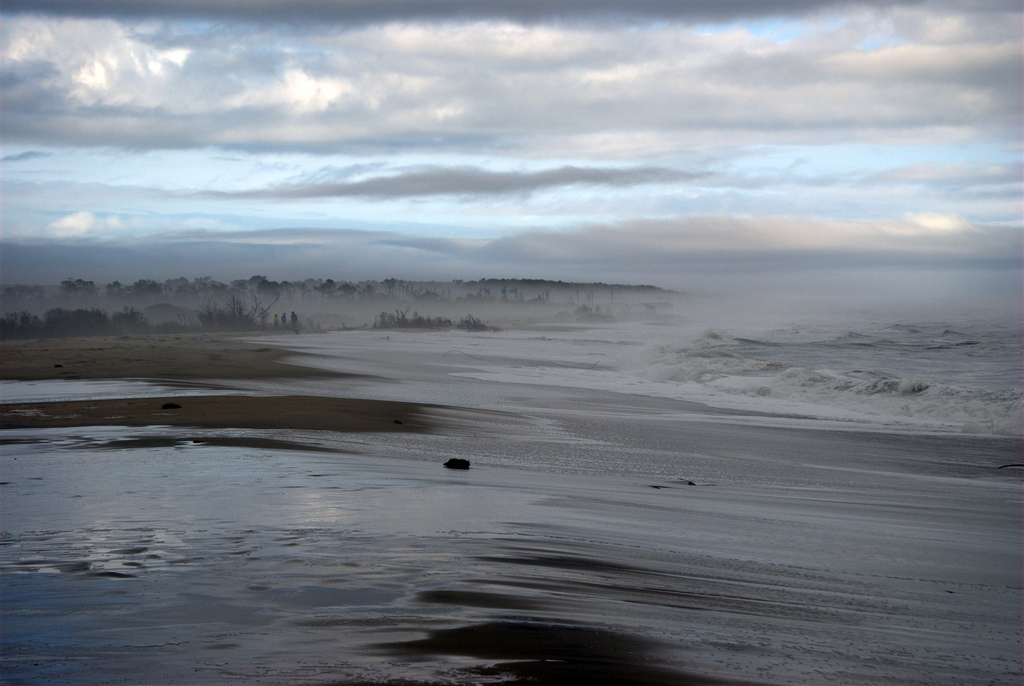
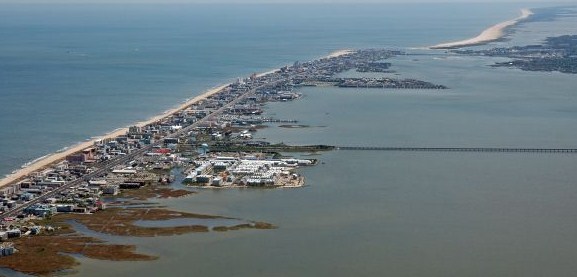
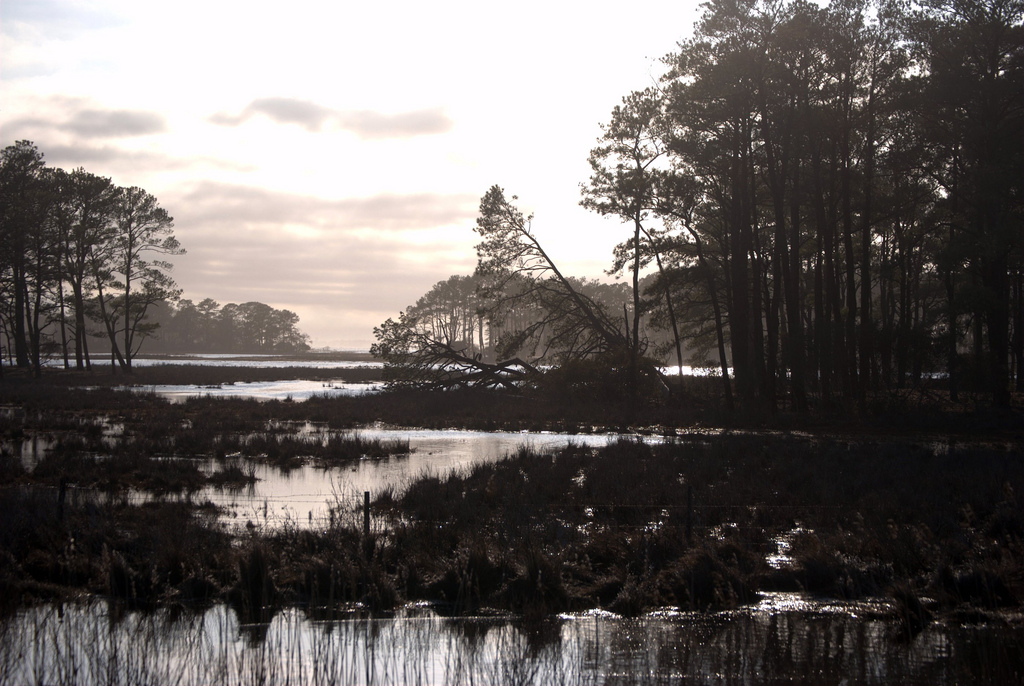
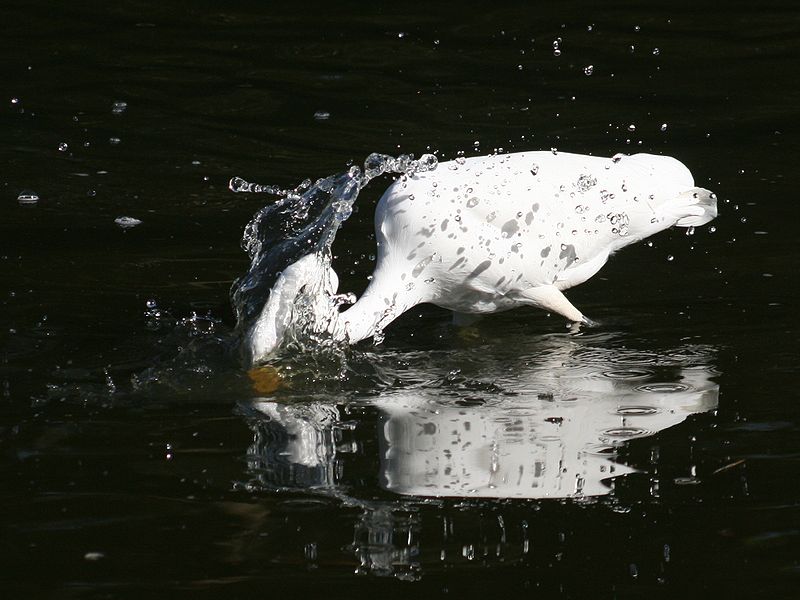
We have the same issues here in another big estuary, Puget Sound, made worse by private ownership of beaches and tidelands. Nothing a few feet of sea level rise can’t fix.